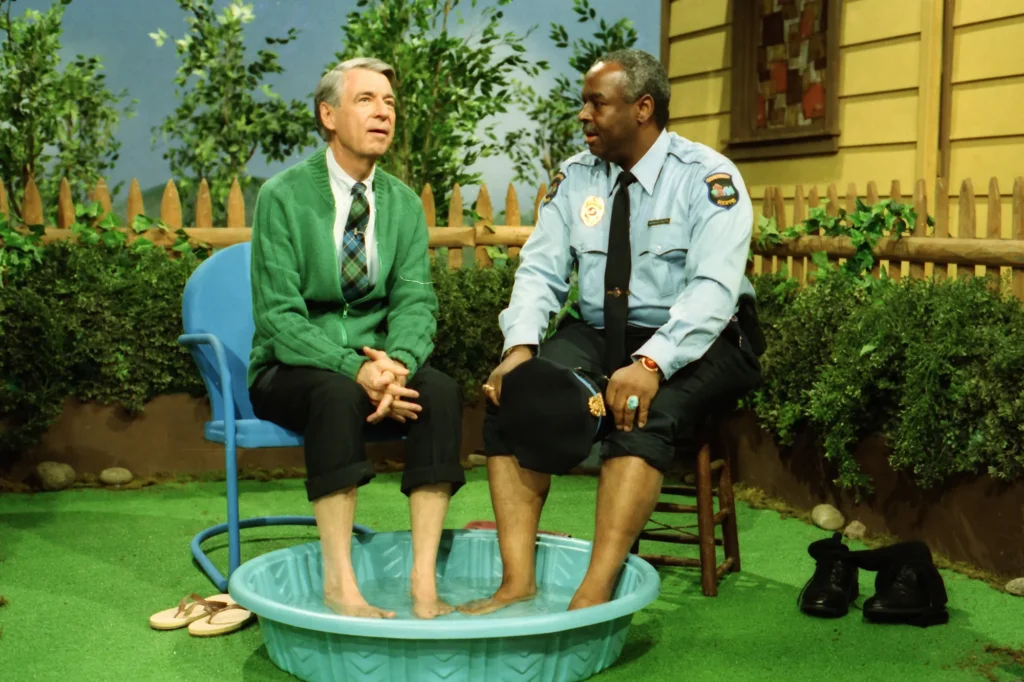In a world that often equates loudness with power and hardness with strength, there’s a quiet form of bravery that doesn’t always make the headlines: the courage to be kind.
From childhood, many are taught to armor up, to be tough, and to meet the world with a stance ready for battle. Men, in particular, receive these messages from all sides. They’re schooled in the art of toughness, instructed to hide their tears and to silence their softer voices. But there’s a different kind of strength that’s gaining recognition—one that’s about dropping the armor and leading with the heart.
Imagine the archetype of a strong man—one forged in resilience, who never backs down. Now, place that same man in a different scene: he’s reaching out with a compassionate hand, he’s listening intently, he’s the first to offer a hug or a word of encouragement. This image might seem at odds with traditional portraits of manliness, but it’s here, in the heart of vulnerability, where true courage lives.

The Legacy of Mister Rogers
One of the most profound examples of this strength in action harks back to a moment on “Mister Rogers’ Neighborhood,” a show that held a mirror up to society with the gentlest of reflections. It was a hot day in 1969, a period rife with racial tensions and the struggle for civil rights in full swing. Public places, including swimming pools, were battlegrounds of segregation, symbolizing the cruel separation of human beings based on the color of their skin.
Enter Fred Rogers, a paragon of gentle spirit, who decided to set a scene that would gently challenge the status quo. He invited Officer Clemmons, portrayed by François Clemmons, to join him and cool his feet in a kiddie pool. There, on national television, was a white man sharing water with a black man—simple, quiet, but revolutionary in its message.
This act of shared humanity transcended the standard narrative of protest. There were no raised voices, no confrontational lines drawn. Instead, there was Mister Rogers, towel in hand, helping Clemmons dry his feet in an act of service and kindness. In doing so, Rogers communicated a powerful lesson, one not delivered through rhetoric but through action.

It’s important to note that Clemmons was initially hesitant about this idea. As a Black man in America, he was acutely aware of the tensions surrounding racial mixing in swimming pools. But he trusted Rogers, understanding the symbolism of their shared moment.
Mister Rogers’ invitation to share the pool became a quiet but potent protest against the injustice of segregation. It was an illustration that kindness and humanity should know no barriers and that the world he envisioned was one where such acts were everyday occurrences, not exceptions to the rule.
François Clemmons would later reflect on this experience, recognizing the courage it took for both men to engage in such a simple act that carried a profound message. Rogers and Clemmons did not just dip their feet in water; they dipped into the waters of change, sending ripples of progress that would resonate for decades to come.
Kindness as a Radical Act
There’s a radical nature to kindness that’s often overlooked. When a man, trained to be a pillar of strength and a bastion of toughness, shows up with kindness, he’s doing something revolutionary. He’s flipping the script, showing that real power comes from connection and empathy, not from the ability to dominate or intimidate.
The impact of this courage can’t be understated. A single act of kindness has a ripple effect, spreading out and touching lives in unseen ways. It’s the antidote to division, the enemy of indifference. When we’re courageous in our kindness, we’re creating a legacy that outlasts moments of conflict and confrontation. It’s a legacy that says, “I am here for you,” without uttering a single word.
It’s time we embrace a new narrative—a narrative that celebrates the man who dares to be tender, the leader who shows empathy, and the individual who isn’t afraid to express genuine care. This doesn’t mean that traditional forms of courage are any less important, but rather, that they are complemented by the bravery it takes to be openly compassionate.
Let us call for a courage that isn’t just about facing external challenges, but also about facing ourselves. It’s a call for a courage that fights not with fists, but with an open heart. It’s a courage that dares to dismantle the walls we’ve built around our definition of strength, and in its place, constructs a bridge to a more understanding and empathetic world.
So, let’s cheer for the man who steps into the arena, not to fight, but to kindly sit beside another. Let’s honor the strength it takes to be gentle, and let’s spread the word that sometimes, the bravest thing we can do is simply to be kind.

